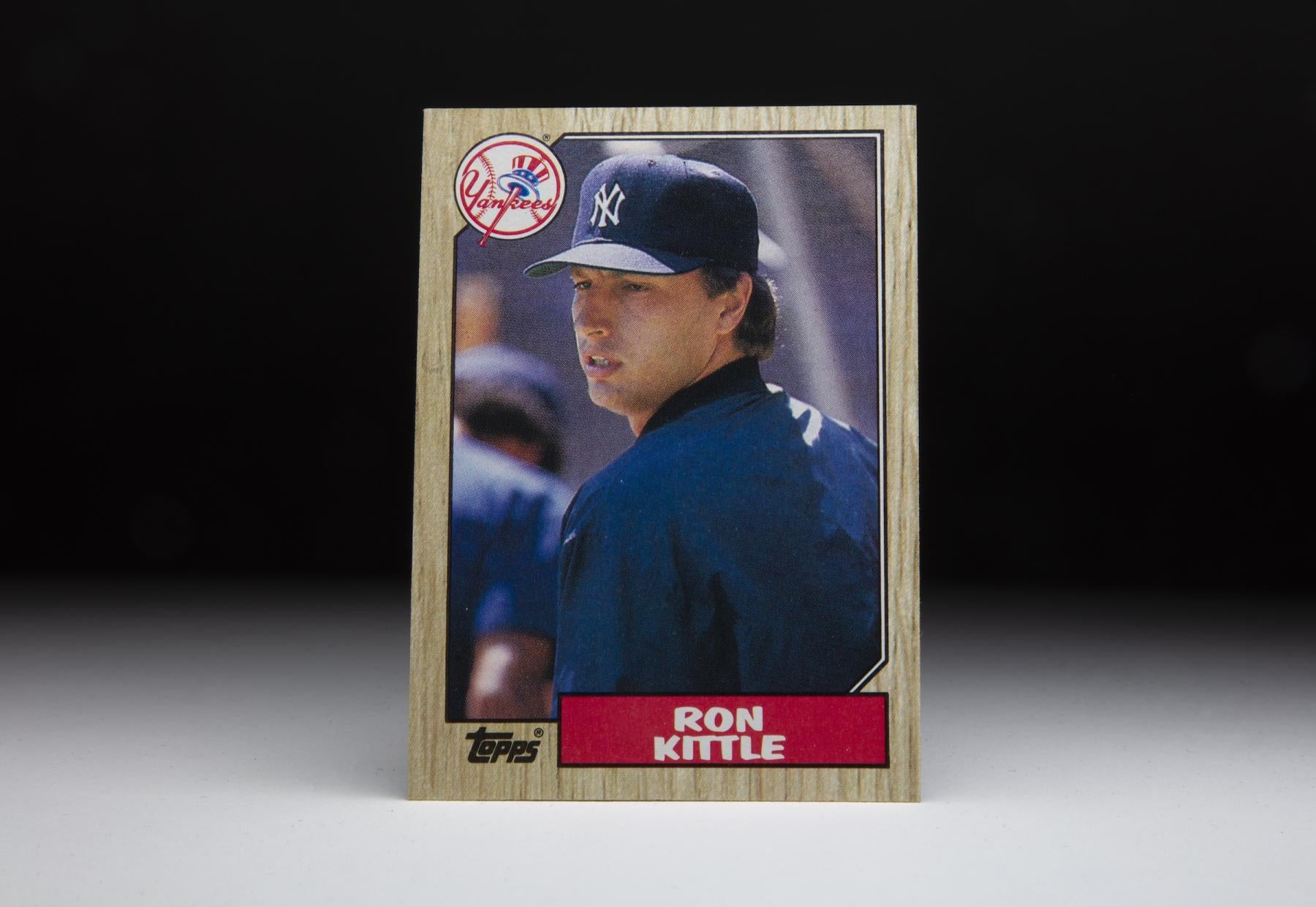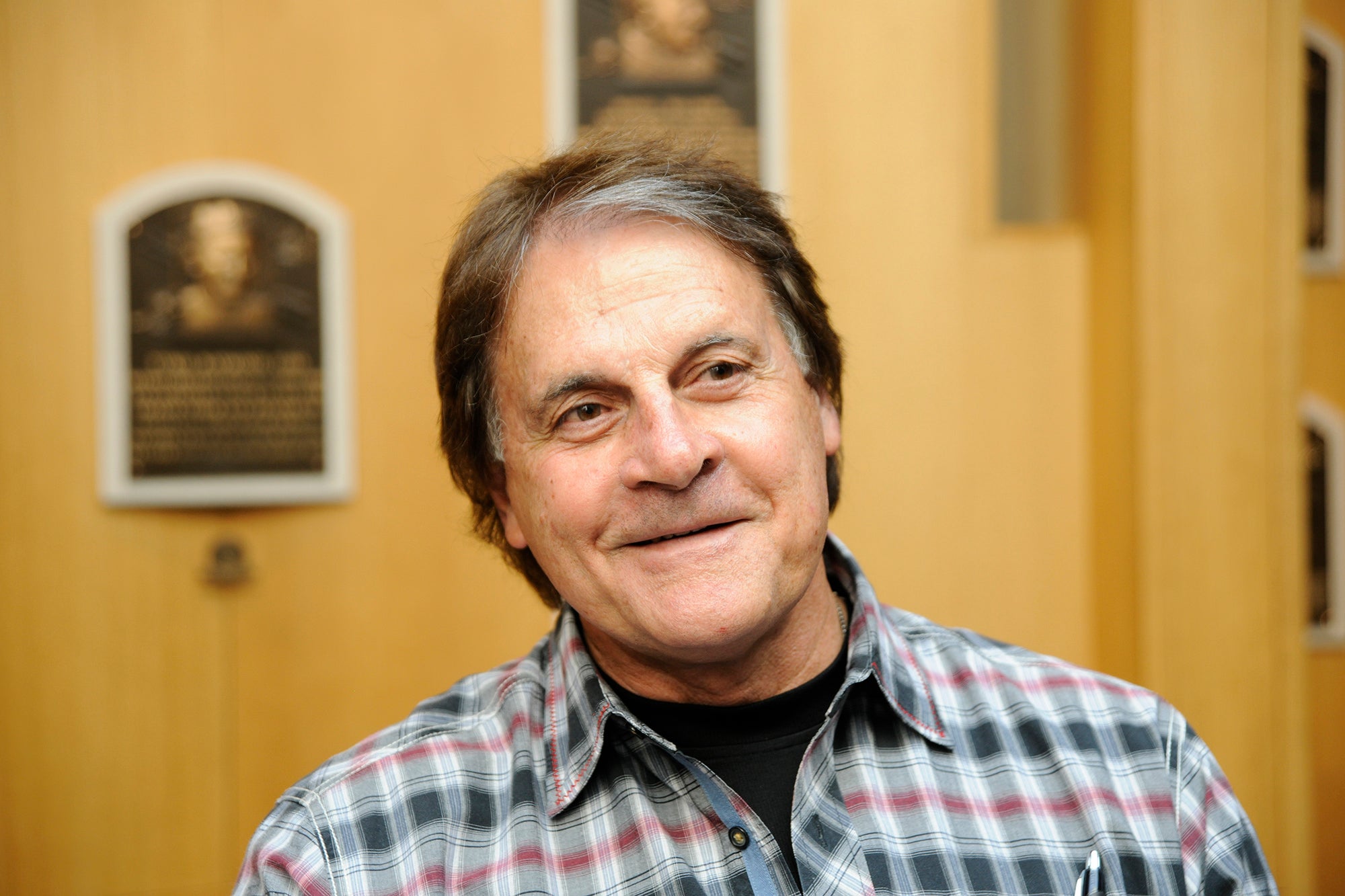#CardCorner: 1987 Topps Ron Kittle
As strikeouts gradually became more common and less unacceptable for batters in the 1980s, Ron Kittle burst onto the scene in 1983 as few rookies have done before or since.
And though Kittle was never able to replicate his fabulous rookie campaign, his legacy as a hitter – and a White Sox legend – remains firmly intact.
“I swing at everything,” Kittle told the Indianapolis Star during his American League Rookie of the Year campaign in 1983. “That way, they don’t know how to pitch me.”
Born Jan. 5, 1958, in Gary, Ind., Kittle attended Wirt High School, a now-closed facility located on the shores of Lake Michigan.
“I followed the rules,” Kittle told the Times of Munster, Ind., when he returned to the school in 2009 as it was preparing for its final month of service. “I attended class. I got my grades. I didn’t cause any trouble.
“We had paddles back then. I made the paddles in wood shop and they used ’em on me!”
Raised in a family who worked in the Gary steel mills, Kittle signed with the Dodgers as an undrafted amateur free agent on July 5, 1977. He played 56 games in the low minors that summer, batting .229 with seven homers and 55 strikeouts.
Then, after hitting .143 in 13 games with Clinton of the Class A Midwest League in 1978, the Dodgers released Kittle one year and two days after signing him, telling Kittle that he had a serious neck injury.
“My right arm felt like it was paralyzed,” Kittle told the South Bend (Ind.) Tribune.
Kittle went home to Gary and became an ironworker, keeping active by playing in semi-pro leagues. He also had spinal fusion surgery to alleviate his neck pain.
It was back in Gary that former White Sox pitcher Billy Pierce saw the 6-foot-4, 200-pound Kittle and advised White Sox owner Bill Veeck to have a look. Kittle impressed Veeck enough to earn a contract, and the White Sox sent Kittle to Double-A Knoxville and later spent time that year with Class A Appleton, finishing the 1979 campaign with a .267 batting average, eight home runs, 38 RBI and 93 strikeouts in 88 games.
He returned to Appleton to start the 1980 season and before being promoted to the White Sox’s new Double-A outpost in Glens Falls, N.Y. Then in 1981, Kittle made a quantum leap at the plate when he hit .327 with 40 homers and 103 RBI in 109 games for Glens Falls. He struck out 107 times but balanced that with 60 walks for an impressive .425 on-base percentage.
Then in 1982, Kittle became the talk of the minor leagues when he batted .345 with 50 homers, 144 RBI and 121 runs scored for Triple-A Edmonton, earning the Sporting News Minor League Player of the Year honors. The White Sox called him up to the majors in September, and he appeared in 20 games down the stretch, hitting .241 with a homer and seven RBI.
In Spring Training of 1983, Kittle won a roster spot, started in left field in Chicago’s second game of the season and stayed there for the rest of the year. He astonished the baseball world on April 10 when he swung one-handed and hit a Jack Morris slider into the upper deck at Tiger Stadium.
“Kittle’s either the strongest guy in the world or else he’s using cork in his bat,” Morris told the South Bend Tribune.
With no credible evidence that Kittle was evading the rules, it became obvious that the White Sox’s slugger was one of the most powerful hitters in the game. He had five homers and 19 RBI in April, earning attention from NBC’s Today Show and keeping the White Sox afloat as they melded new faces with future Hall of Famers like Carlton Fisk and Harold Baines.
Kittle did not play the following day in Game 4, and the Orioles won 3-0 to claim the AL pennant. Kittle would not play in the postseason again.
The White Sox and Kittle could not repeat their success in 1984 as Chicago went 74-88 to fall to fifth place in the AL West. Kittle slumped to .215 – unable to repeat his All-Star performance of 1983 – while hitting 32 home runs and driving in 74 runs. But with his power stroke still evident, hopes were high that the season was nothing more than a sophomore slump.
“He’s a unique home run hitter,” White Sox hitting coach Charlie Lau told the Indianapolis Star in 1983. “Kittle doesn’t remind me of anyone else because he doesn’t muscle his swing as all the other home run hitters do.
“He swings easy. It’s the ball that goes hard.”
But while going after a ball hit by Tony Armas on April 20, 1985, at Fenway Park, Kittle crashed hard into the outfield wall and suffered a shoulder injury. He tried to play through the pain but was hitting .195 with eight homers and 16 RBI in 49 games through July 1 when he was placed on the disabled list. He returned in late July and recaptured some of his power, finishing the year with 26 homers and 58 RBI in 116 games.
And though he lost his arbitration case prior to the 1986 season – settling for $400,000 instead of the $500,000 he asked for – Kittle was optimistic that the new campaign would be a bounce-back one.
“That’s the real Ron Kittle we saw in the last part of the (1985) season,” La Russa told the Chicago Tribune.
But it was not to be. On July 30, 1986, with the White Sox at 43-56 and having already dismissed La Russa, Kittle was traded to the Yankees with Joel Skinner and Wayne Tolleson in a six-player deal that brought Ron Hassey, Carlos Martínez and Bill Lindsey to Chicago.
“Ron is a wonderful person with a wonderful personality,” White Sox second baseman Julio Cruz told the Chicago Tribune. “Anytime a teammate gets traded, you feel bad.”
Expected to provide a power boost to the Yankees, Kittle hit .238 with four home runs and 12 RBI in 30 games to finish the season with a .218 average, 21 homers and 60 RBI in 116 games.
Kittle and the Yankees settled on a $425,000 salary for 1987, and Yankees manager Lou Piniella planned to platoon Kittle with left-swinging Dan Pasqua at DH. But after hitting .325 in Grapefruit League play and vowing to become more selective at the plate, Kittle was hitting .305 in early July when a neck ailment landed him on the disabled list for five weeks. He played in just 17 games the rest of the season and finished with a .277 batting average, 12 homers and 28 RBI in 59 games.
The Yankees did not offer Kittle a contract following the season despite the fact he was popular with teammates and the media thanks to his light-hearted approach to the game. An oft-repeated story – which Kittle originally told and later denied – was that he injured his neck in 1987 while helping carry injured teammate Lenn Sakata from the field on a stretcher.
“To tell you the truth, I wasn’t surprised with the trade,” Kittle told the Baltimore Evening Sun. “I kind of expected it.”
A free agent once again, Kittle returned to Cleveland on a one-year contract but was released on April 1 before the season began. The White Sox brought him back on a minor league deal on June 19, and he torched Triple-A pitching for a month at Vancouver before being recalled to the big leagues.
Kittle hit .191 with two homers in 17 games in what would be the final action of his MLB career.
In 10 seasons, Kittle hit .239 with 176 home runs and 460 RBI. His career at-bat-per-home-run ratio of 15.39 remains in the top 30 all-time.
He later managed in independent ball and even appeared as a pitcher for the Merrillville Muddogs – with whom he was managing – in the Mid-America League in 1995.
Active off the field during and after his career, Kittle founded Indiana Sports Charities in 1989 to help fund childhood cancer research and later became a popular ambassador for the White Sox.
“I’ve been fortunate to have a nice baseball career,” Kittle told the Akron (Ohio) Beacon Journal. “I’ve come back from three career-threatening injuries. So it’s a sign that maybe I should go out there and do some nice things.”
He did some nice things on the diamond as well.
“I always had the heart for it, the ambition,” Kittle told the Indianapolis Star. “I got a chance with the Dodgers and I got injured. The White Sox gave me a second chance and I took advantage of it.”
Craig Muder is the director of communications for the National Baseball Hall of Fame and Museum










